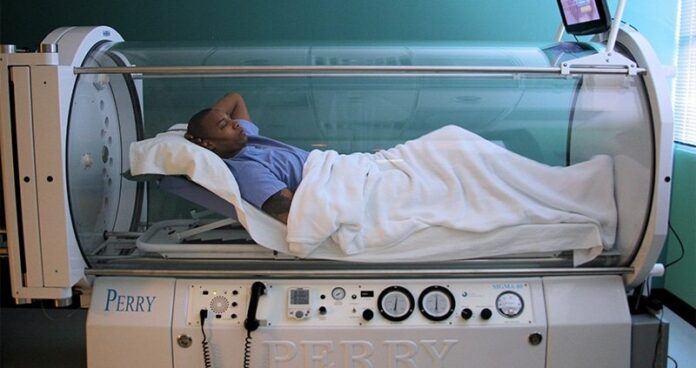A multiplace hyperbaric oxygen therapy chamber is designed to provide 100% pure oxygen at higher-than-normal pressure. They are FDA-approved to treat many different medical conditions, and they can be highly effective for several off-label conditions, too.
Multiplace chambers can accommodate up to 6 people at a time, which is why they are most often found in hospitals or trauma centers where patients can’t exactly wait around for their turn in a monoplace chamber.
Let’s take a closer look at how hyperbaric oxygen therapy is administered in a multiplace chamber.
What Are The Benefits Of Hyperbaric Oxygen Chambers?
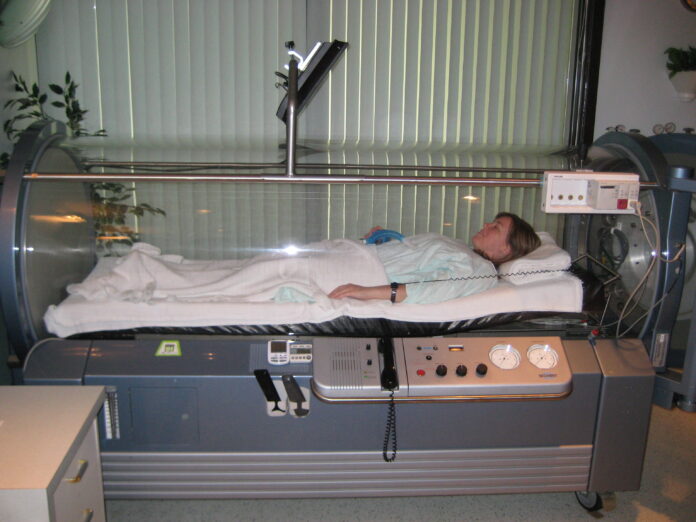
Increases Circulation And Oxygenation
The treatment reduces the narrowing of healthy blood vessels all over the body. As a result, it increases vascular resistance (blood resistance) and the blood flow becomes normal.
Repairs Damaged Blood Vessels
Blood vessels get damaged, as there is not enough supply of oxygen, due to injuries. Increased oxygen level through oxygen treatment, aids in the formation of healthy blood vessels, reducing swelling.
Since the oxygen supply to cells and tissues increases, it reduces swelling and inflammation. Oxygen activates the functioning of cells, thus eliminating the hardening of tissue walls. Hence, hyperbaric oxygen treatment alleviates swelling.
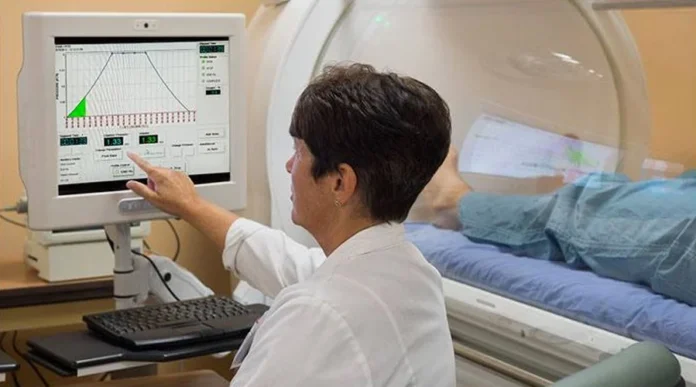
What To Expect In A Multiplace HBOT Chamber?
A multiplace hyperbaric chamber holds more than one patient at a time. Depending on their individual needs, patients may sit in chairs or recline while receiving oxygen through face masks or hoods. During the treatment session, a hyperbaric technician accompanies patients into the chamber to monitor them directly, or perform procedures compatible with high atmospheric pressure.
There are two big differences between multiplace and monoplace HBOT chambers.
The first is that the patient will have to share the space with other people.
The second is that instead of breathing normally in a chamber that is filled with high-pressure oxygen, the patient must wear a mask or hood through which 100% oxygen is pumped.
The masks are what you would expect in this situation and resemble the masks used by paramedics when they need to help their patients breathe. Hoods, on the other hand, provide the same direct stream of oxygen, but they surround the whole head.
The room air pressure is not as high as a monoplace chamber because they traditionally use compressed room air at 21% oxygen. This means patients can receive treatments while wearing their normal clothes and can bring other items into the chamber with them (reading materials, etc.).
The chambers from oxyhelp.com are also useful when specialized seating or wheelchair space is required.
Patients in the chamber can stand, sit, or, in some cases, lay down to increase their comfort levels, and each chamber should be equipped with a communications system so they can speak with staff members at any time.
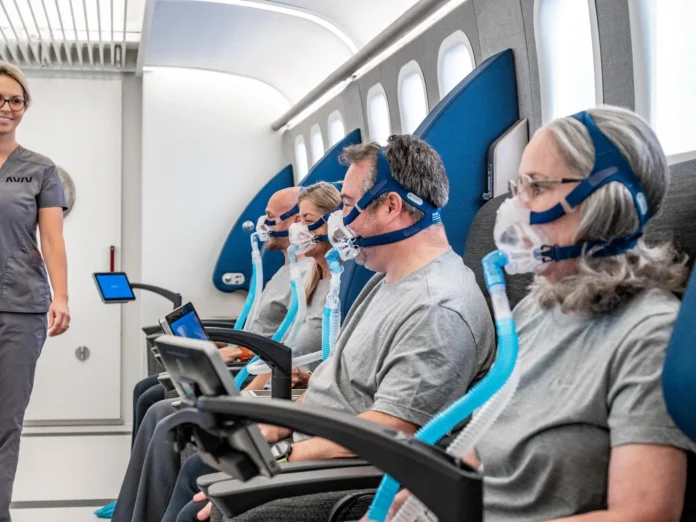
Before Starting Therapy
These are the five facts before entering a hyperbaric oxygen chamber for therapy:
1. Don’t Arrive Sick To The Appointments
Your treatment might be delayed if you have a cold or other illness such as high blood pressure, fever, frequent loose stools, or any flu-like symptoms. If a patient has a cold, it could affect their ability to clear their ears, which could lead to inner ear injury.
2. Certain Medications Should Be Avoided Ahead Of Time
Oxygen may change the effects of certain medications. While receiving therapy, there are a handful of medications that cannot be taken in combination with this treatment, such as some chemotherapies, a topical ointment used for wounds, and medicine that prevents alcohol intake in patients with a history of alcohol abuse.
Be sure to speak with your physician and healthcare providers in advance to discuss any drugs you’re taking.
3. Expect To Be There For A Few Hours
Hyperbaric oxygen chamber therapy sessions last a little over two hours and are generally scheduled once a day, five days a week. Your doctor may prescribe 30 or more treatments before the therapy is complete. How many treatments you have is often dependent on how quickly your condition improves.
The actual treatment takes about 110 minutes; 90 minutes of oxygen with two 10-minute air breaks. The rest of the time is for the descent and ascent time.
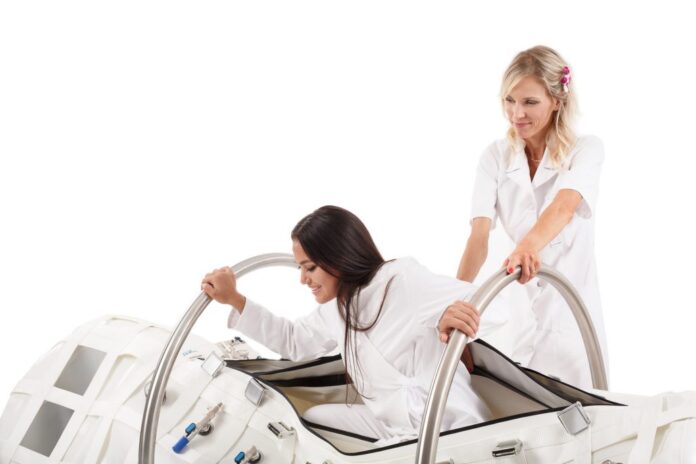
4. You May Feel Like You’re On An Airplane At First
Some people say the start of this therapy feels similar to flying on an airplane. As the pressure builds in the chamber, so does the pressure within your ears, which may leave you with an ear-popping sensation.
5. Some Potential Side Effects To Be Aware Of
Feeling tired after your treatment is normal, and so is a pain in your ears or sinuses, or the feeling of fluid buildup in your ears.
If you’re claustrophobic, being confined in the chamber could also make you anxious. Vision changes and finger numbness can occur, but both usually subside during the treatment. With the increased pressure and breathing in 100% oxygen, you could also feel woozy, or even giddy.
In very rare cases, seizures or a collapsed lung can occur due to the treatment, and it can potentially increase the progression of cataracts.
A collapsed lung would only occur if the patient had emphysema or another lung disease where air could get trapped in small blebs (a blister filled with fluid) and burst with the pressure changes. But this is extremely, extremely rare.
Although rare side effects can occur, a trained and certified healthcare professional is always present on-site during the entirety of your treatment, which is a nationwide rule.
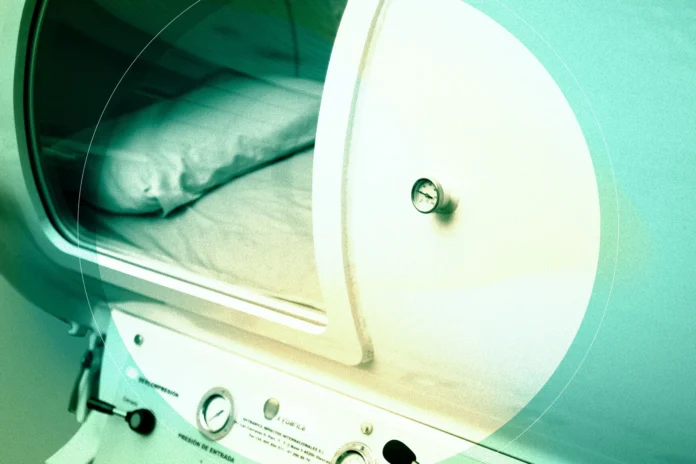
Is A Multiplace Chamber Right For You?
While the FDA has approved these types of chambers for a range of treatments, some disadvantages should be noted.
The biggest concern is that many patients feel uncomfortable wearing a mask or hood for an entire treatment. On top of that, sharing the same, enclosed area with several strangers can add to any feelings of anxiety or claustrophobia the patient may be feeling.
Finally, since multiplace chambers aren’t pressurized to the same level as monoplace chambers, they aren’t going to be quite as efficient, so patients may require more sessions. It’s also harder to customize the procedure to a patient’s exact needs, which can also lower the effectiveness of each treatment.
Still, they are approved for treating some serious conditions, so if it’s your only option, you can say it’s the right option.
However, monoplace chambers do offer a higher level of comfort, privacy, and effectiveness, so it may be worth your time to explore all of your options.
Bottom Line
Hyperbaric chambers are used to treat a variety of medical conditions. Depending on the type of chamber, it will have a different purpose and application. In general, hyperbaric chambers can help with neuro diseases such as dementia and strokes as well as treatment for decompression illness, cancer, and osteoporosis.

